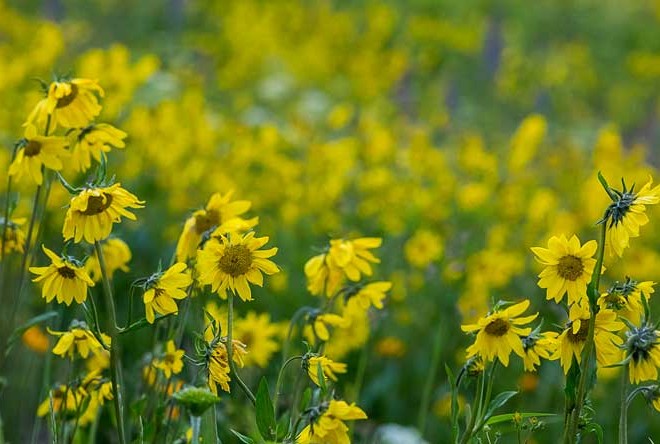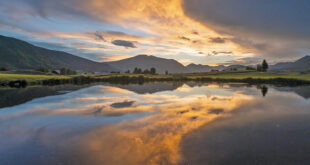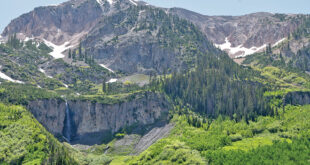There really does come a time when numbers overwhelm intent. If the intent is to have a solid economy based on sharing the specialness of a wonderful valley and all the natural and cultural amenities that come with it—we may be on the verge of losing the golden goose. Seriously. This is not a “close the gate and get rid of tourists” piece but it is a warning. When people with skin in the game start using words like “disaster,” “chaos,” “nightmare,” and “overwhelmed,” then a red flag is waving mightily in the wind. We should heed the red flag warning. We can see the spreading rash but we need to do more than talk about how much it itches.
We are at the time of the peak season when nerves are on edge. But it is frankly not without reason. Just hearing of a few examples from this past week indicates there is a loss of control happening. Some of the situations are based in entitlement, ignorance and arrogance, and that can hopefully be addressed through education, enforcement and planning. A couple of examples are troublesome on the “more tourism is needed” and “I am entitled to do what I want” fronts.

The backcountry base is super crowded these days. A quick bike ride or drive up any of the nearby valleys on the weekend will show the valley floors are rife with camping. The numbers are a real issue. I believe when numbers were less there was a chance to inform and educate those coming here about some communal values and etiquette. There are the little things like “Don’t pick the wildflowers,” or if you are biking a trail, “Yield to the uphill rider.” More little things like when you are walking down Elk Avenue or along a trail and someone (even someone you don’t know) says “hi,” it is okay to say “hi” back. You will not be attacked and stuffed into an Escalade trunk if you return the greeting. And as was pointed out to me last week—why do so many tourists speed down Elk Avenue and drive so slow on Highway 135? Is 35 mph the only speed some know?
But this past weekend, photos circulated of people destroying a meadow alongside the road above Gothic. A van had apparently gotten stuck in a bog that has developed in the Gothic road after the summer rains. A line of vehicles was waiting on both sides of the stuck van. Instead of getting the van out, drivers decided to go around…essentially creating a new road around the bog and driving over wildflowers and the meadow. That is hitting the red line beyond acceptance and patience. As described by a local biker and mayor, “It was chaos.”
Rather than “loving the backcountry to death,” it’s starting to feel like an abusive relationship. Up at the Rocky Mountain Biological Laboratory, these impacts are not just irritating but ruining their work. According to RMBL executive director Ian Billick, the situation is clearly out of control. “The current situation is a disaster. We’re losing meadows to illegal roads, illegal parking, and illegal camping. It’s not good for anybody—visitors, scientists, or ranchers. The USFS is doing their best, but they are overwhelmed,” he said.
A local rancher lamented that it is getting nearly impossible to run a cattle business in that area. “Nightmare” was the description used.
Now, unlike the beliefs of some, it is not practical to put up a gate behind the last person to arrive in 1998. Plus, many of the changes and amenities that come with a more vibrant tourism economy are great. But what was witnessed last week was not vibrant. It was dangerously close to ruining the reason we live here and the reason people travel here. So it would be better to help those who are coming here to understand the values of this place…which are probably different from the values of most places. You should respect the backcountry. You should help those in a pinch. You can’t always get what you want.
It is impossible to pass along those values if the wave is too big. You cannot educate a tsunami of visitors. You might be able to catch a waist-high wave of interested tourists, however, and show them the light.
There has been some reaction to deal with what feels like a spreading rash. Gunnison County has tried to help alleviate a symptom of the bigger problem. A county crew tried to backfill that bog near the campground. According to county public works director Marlene Crosby, “The county maintains the Forest Service portion of the road under a Schedule A agreement. We are obligated to provide routine maintenance, which includes blading, erosion control, etc. The Forest Service is responsible for major repair work and providing materials such as gravel and culverts.”
She explained, “The bog near the campground may require the same type of treatment that was done on two other spots on the road last summer. It appears to be more than routine maintenance. The Forest Service did not have equipment in the area last week, so one of our employees did try to fill the soft area with a pit run material, but it sounds like that might already be saturated.”
The Tourism Association is dealing with another symptom by paying for new educational signage around the valley. The chamber of commerce is helping by engaging hundreds and hundreds of people every day.
One homeopathic measure that could help is for the Forest Service to rethink its denial of a proposal to allow public bus service to run past Gothic to Judd Falls. There was no outcry by any commercial bus company over the idea since they handle trips well past Judd Falls. The Forest Service should seriously look at that idea again for next summer—and not wait until May 2016 to address the issue. Provide an alternative to more cars. If something isn’t done, we could see a prohibition of vehicles in some areas of the summer backcountry. That would be like cutting off an arm to treat the symptom.
In the meantime, Forest Service spokesperson Lee Ann Loupe said people are not allowed to drive off the road. “It is illegal to drive off designated routes and/or to cause resource damage. As for camping, most roads allow 300 feet to get off the road and camp, provided they do not do resource damage (rutting, etc.) in doing so. We have law enforcement officers to respond to these incidents and the best I can suggest is to have folks call the FS LEO [law enforcement officer] and/or sheriff when these incidents occur and provide as much information as possible (e.g. license plates, descriptions, etc.) for a law enforcement officer to be contacted and/or investigate.”
Okay. So we all seem to see a problem. The rash is spreading and it is itchy. It has only gotten worse as the summer has progressed and gotten busier. There will be a natural pullback to the numbers when school starts up again and people head home in August.
But that is the time that all those entities that are impacted have to sit down and work out a solution. Do it this fall, not next spring. The time to document the problem, talk about the situation and develop a plan to alleviate a continuing rash—is soon. Look at the symptoms and address the disease while the pain is fresh.
What is happening this week cannot happen next year because it will only be worse and that will indeed end up killing the golden goose with an irritating rash.
—Mark Reaman
 The Crested Butte News Serving the Gunnison Valley since 1999
The Crested Butte News Serving the Gunnison Valley since 1999






